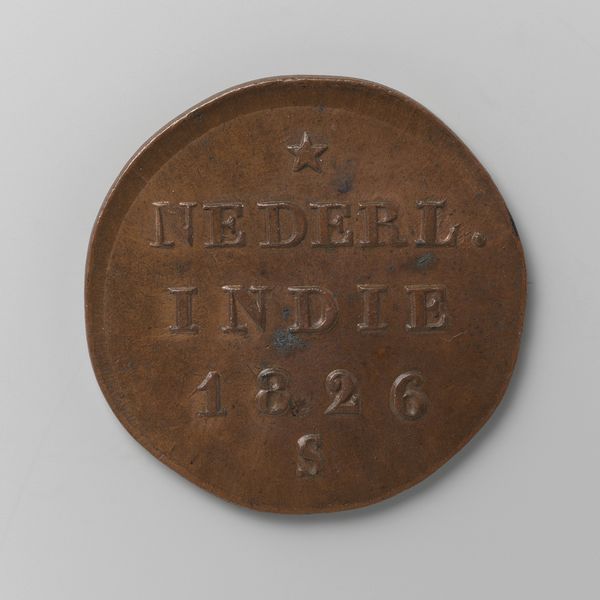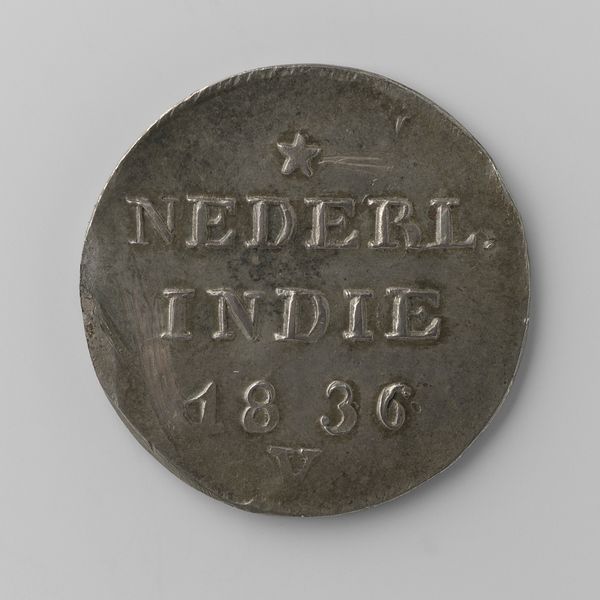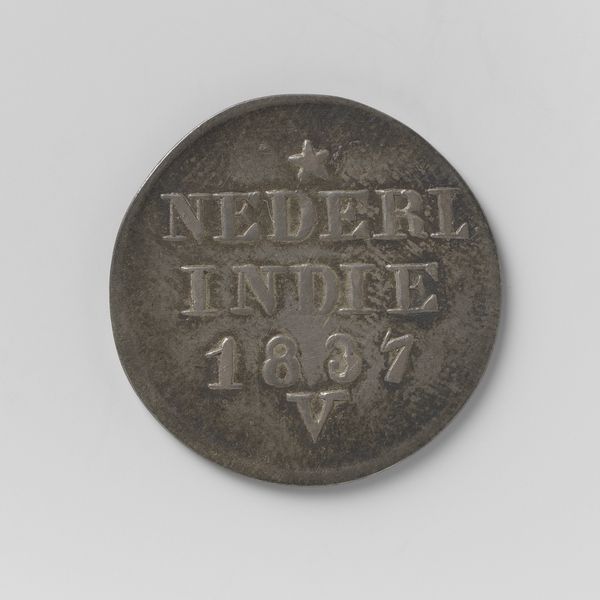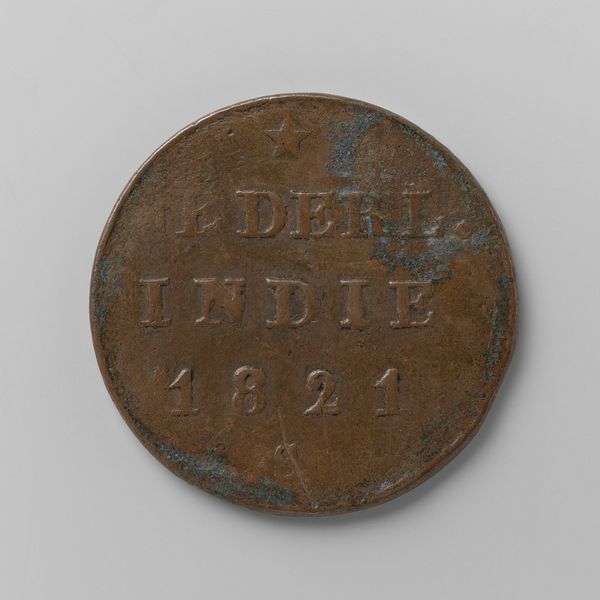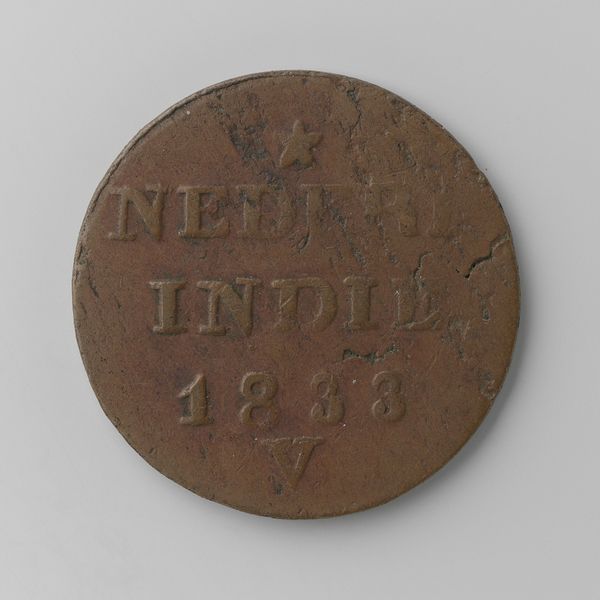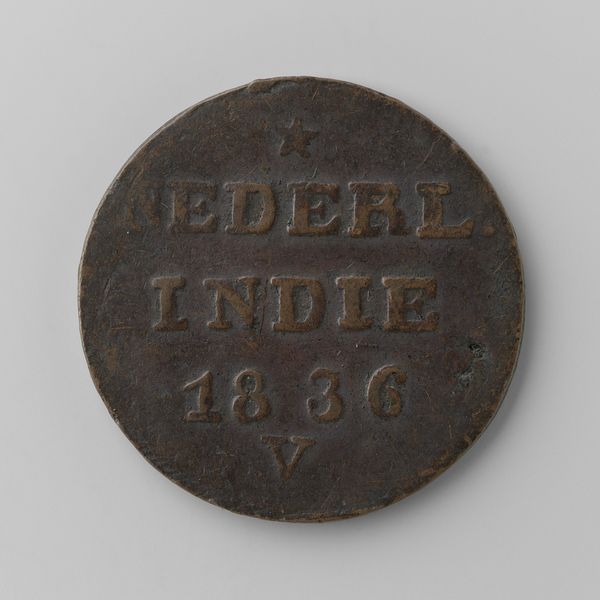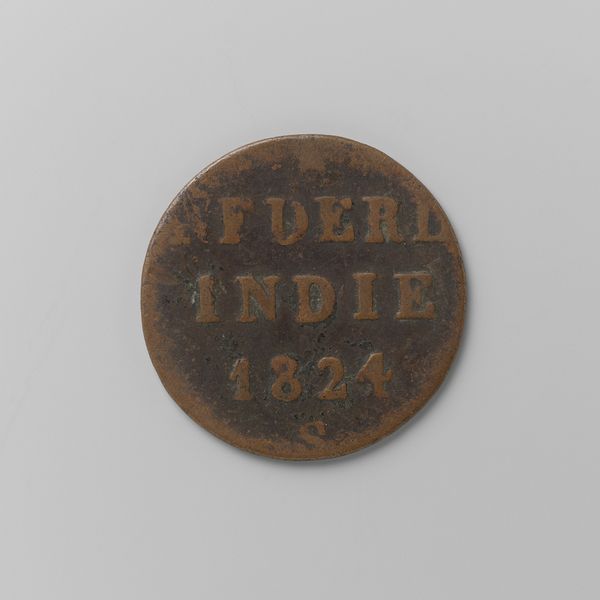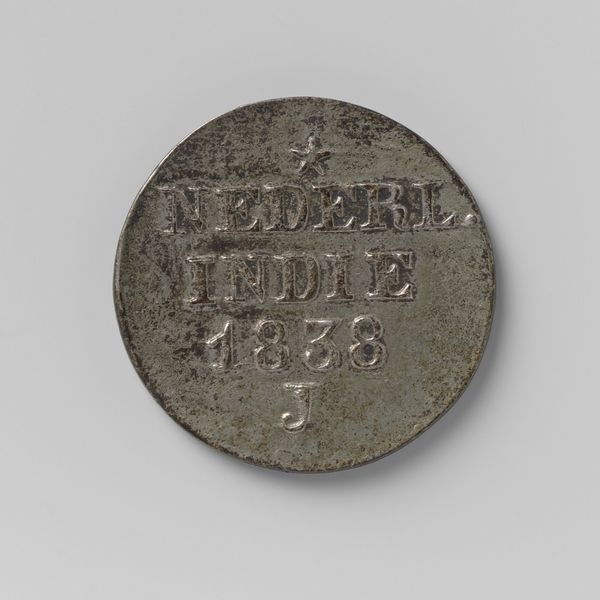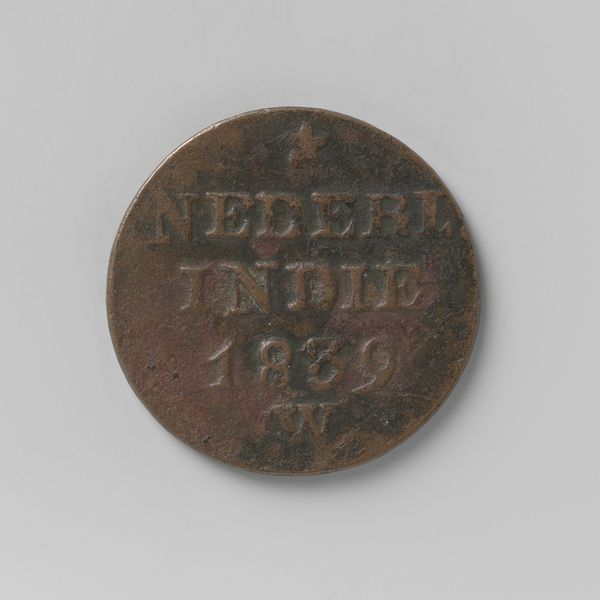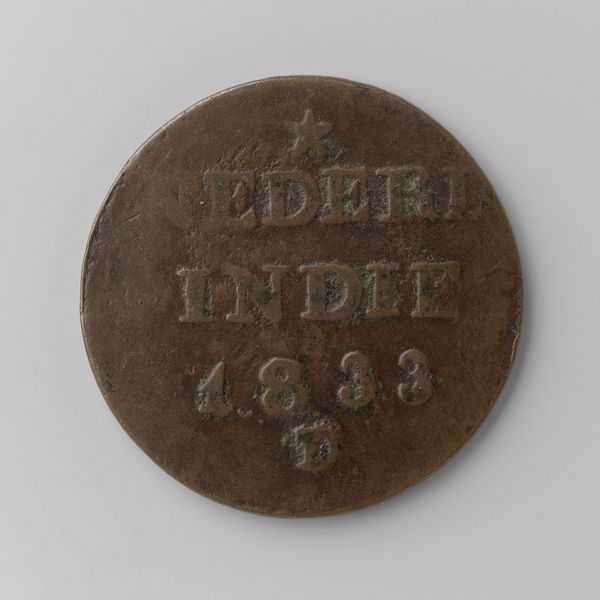
metal, bronze, embossing
#
medieval
#
metal
#
bronze
#
embossing
#
geometric
#
embossed
#
history-painting
Dimensions: diameter 1.8 cm, weight 1.45 gr
Copyright: Rijks Museum: Open Domain
Curator: Let's turn our attention to this small yet weighty artifact, a ½ Duit coin for Nederlands-Indië, or the Dutch East Indies, originating from Amsterdam in 1815. Cast in bronze, it offers a tangible link to a complex chapter in Dutch colonial history. Editor: Immediately, I’m struck by its…ordinariness. It’s a coin, humble in size, yet the embossed text— "Nederl. Indie"— screams of empire and exploitation. The stark contrast between form and context is unsettling. Curator: Precisely! Coins like these were crucial tools in establishing Dutch economic dominance. This wasn't just about trade; it was about controlling labor and resources in the Indies. Willem I’s image, though not present here, was typically stamped on these, solidifying his rule. Editor: It’s disturbing to think of this coin, probably passed between Javanese or Sumatran hands, each transaction reinforcing a system of oppression. The single star at the top—does it symbolize the Dutch aspirations, a guiding light of colonialism? Curator: It could be interpreted that way. Numismatists often debate the symbolism on these coins, but what's clear is the strategic placement of "Nederl. Indie" – Dutch East Indies – asserting ownership. This half-duit, seemingly insignificant, served as a constant visual and tactile reminder of colonial power. Editor: So, even something as ubiquitous as currency became a tool for reinforcing imperial ideology. It forces us to consider the subtle ways power operates, embedding itself within everyday objects. It’s not just about grand historical narratives, but the small-scale exchanges, the faces of a subjugated people, forced to operate under the terms dictated by these colonial instruments. Curator: I agree. This little coin embodies so much of that historical tension, the micro-politics of empire. I find it incredibly powerful. Editor: Yes, it reframes the whole perspective of history; each ordinary thing we find in our pasts tells a different story if we can only understand its meaning and its impact.
Comments
No comments
Be the first to comment and join the conversation on the ultimate creative platform.
